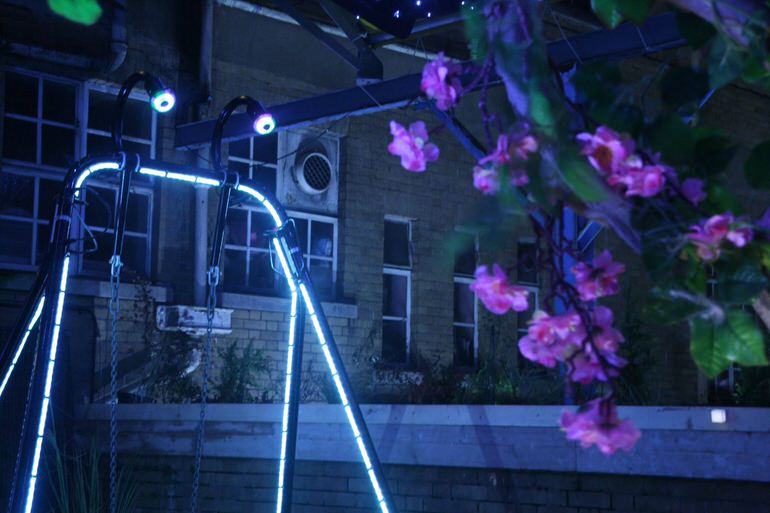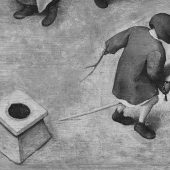
A talk at the University of York’s Theatre, Film & TV Department‘s research seminar series on October 11th. Taking the Lightbug project to design interactive playground equipment as a case study, it coveredconcepts and approaches for researching the temporalities of design for postdigital play:
Design is by necessity future-oriented, even the most everyday and banal new object or system must anticipate the future needs and desires that will realise it as a successful artefact. In design for play this speculative mode is often an integral or central consideration: how to design for and facilitate emergent and unanticipated actions and behaviours? Drawing on ethological studies of the design processes of recent experimental game and toy design projects that integrate digital and physical elements, this talk will suggest concepts and approaches to researching the temporalities of design for postdigital play.
All technological design aims to shape the future, to configure or modify future activities and behaviours, events that are facilitated by new devices or systems or development or amendments of existing devices and systems.
This said, if the design of any system or artefact has a speculative, future-oriented dynamic then, in design for play the nature of the time (and space) of play is often foregrounded, an integral or indeed central consideration.
To design for play itself, for games and other playful activities requires a particular level of attention to and work with flux. Designing for unexpected uses and outcomes in ludic projects is a key aim – an aesthetics of flexibility. Playful artefacts can be placed on a spectrum from the rigid rules of a chess set to the openness of a child’s sandpit, and between these extremes lie a continuum of designed objects and environments that aim to shape play to a certain extent, and allow for and facilitate emergent imaginative and kinaesthetic behaviour. So on the one hand the design systems and devices for play requires an implicit awareness of the relationship between constraint and flexibility. For example a new board game might be tightly rule-bound, somewhere near Snakes and Ladders in its restriction of player agency to the role of dice, or, like Pictionary, it might be designed to initiate and sustain emergent and performative play. This ratio underpins all design for play either explicitly or implicitly. On the other hand, to design for play is more often than not to design for social, collective behaviour, to configure and scaffold future relationships over a more or less determined duration of time. The design of a board or card game shapes or configures its players and their relationships in time and as a micro-community. It determines (albeit not absolutely) whether they are collaborators or antagonists, whether their interactions are serious and concentrated or breezy and joking. Moreover the anticipated players and the future relationships designed into the game may well not all be human. Digital play in particular brings computer-controlled agents, objects and environments into these social and ludic behaviours and events.
I have addressed the need for innovative approaches to researching design in a networked and postdigital culture. The challenge for the designer of postdigital play then is to reflect on what players know and feel implicitly: what are the play affordances of diverse objects, materials and worlds in a postdigital cultural ecology? What do cardboard boxes do – with their light and manipulable materiality, their invitation to be cut, drawn on, worn or lived in? What imaginative and sensori-motor behaviours do digital gameworlds invite – from puzzling out and playing with the rules to exploiting glitches and cheats to open up emergent play? And how do the virtual and actual intersect in play – what translations of virtual physics and algorithmic action are effected back and forth between them? What worlds can be built from cardboard and code?
To play is often to play with ideas or dreams about the social environment as well as material and virtual objects. Growing into a mediated, networked, virtualised world requires play with concepts and symbolic relationships. Close attention to children’s play in particular captures complex, phantasmagorical condensations and sublimations of technologies, interfaces, adult behaviours and mediated dramas. Postdigital play apparatus might offer semiotic and symbolic resources along with their technical characteristics. For, whilst acknowledging all the historical and anthropological continuities that can be traced through complicated play apparatuses over the centuries, digital media and virtual worlds are new and different in important ways. And these differences are not necessarily the superfluous and flimsy accretions of consumer culture satirised by Huxley. Well-designed videogames and participatory media applications suggest, encourage, trigger, new types of imaginative, competitive or simply time-passing play. Play’s relationship to the serious world within which it erupts is never one of straightforward mimesis, but it does relate to it, adapt it, invert it, remix it. In an everyday environment replete with, and partly accessed through, complicated digital media, complicated digital media toys may be required (alongside cardboard boxes) to make sense – or nonsense – of it.




